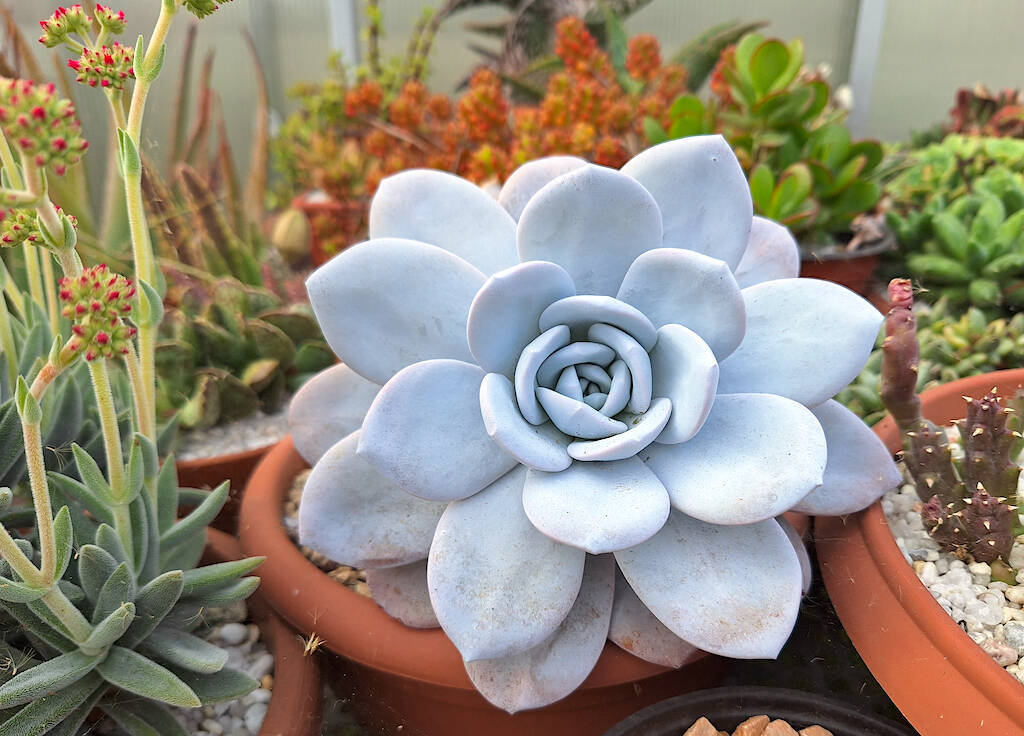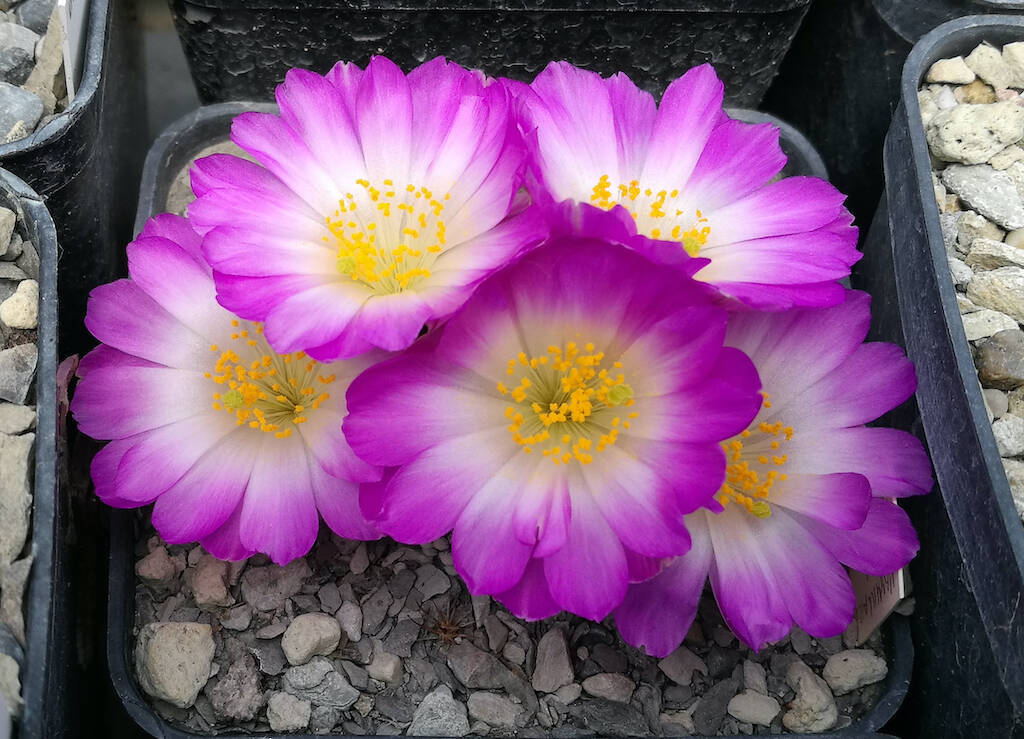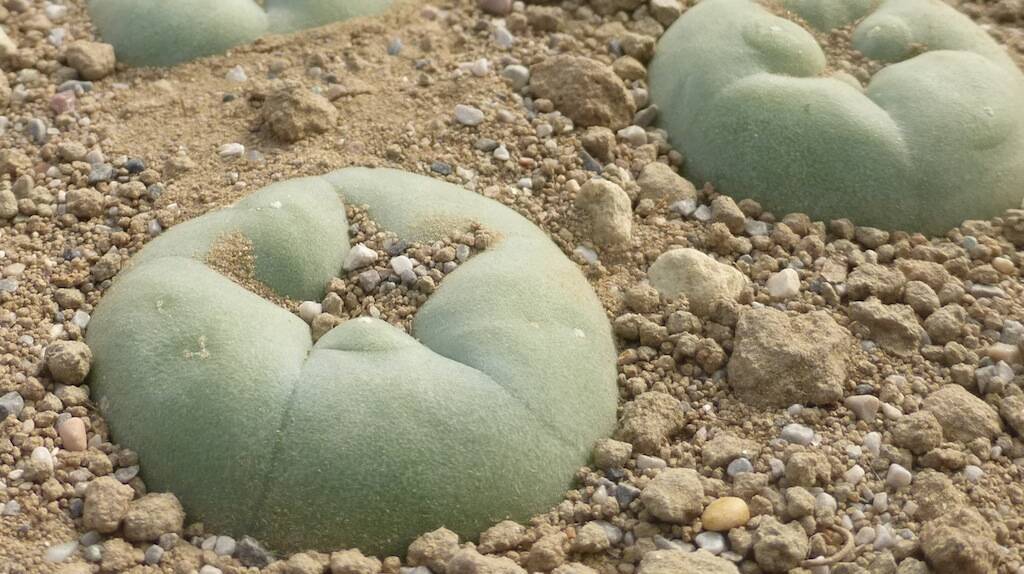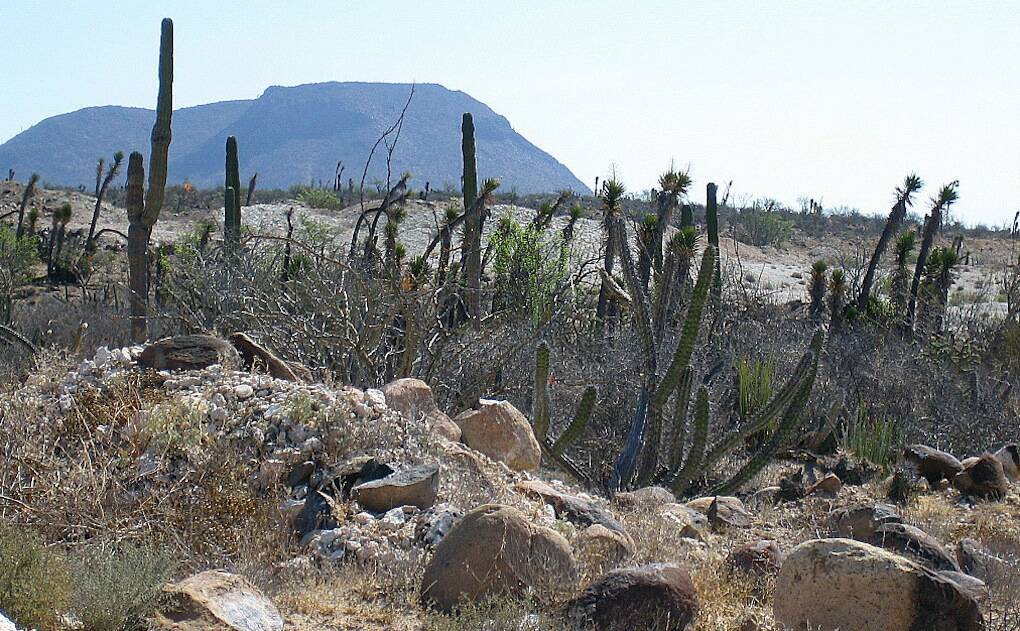Admire it as long as you want, but don’t you dare touch it! Even a simple caress is able to disfigure this masterpiece of Nature, altering the suggestion of wax – or the sensation of painting – that this succulent plant returns to the eye. Echeveria laui is a very widespread Crassulacea and also appreciated by those who mainly grow cacti. Its appearance, on the other hand, is undeniably attractive and it is difficult for a specimen of this succulent to go unnoticed. Either for that splendid blue color, or for the compact shape of the rosette, with the blunt tips or, again, for its uniqueness even within the Echeveria genus, which also boasts various species with specimens with pale blue leaves. The fact is that it is impossible not to admire the perfection of a well-cultivated (and above all never touched!) specimen of this particular species.
In this article we deepen our knowledge of Echeveria laui, we understand why it has this appearance which is certainly not unique in the world of succulents but undoubtedly peculiar, and we learn how to grow it correctly. (…)






